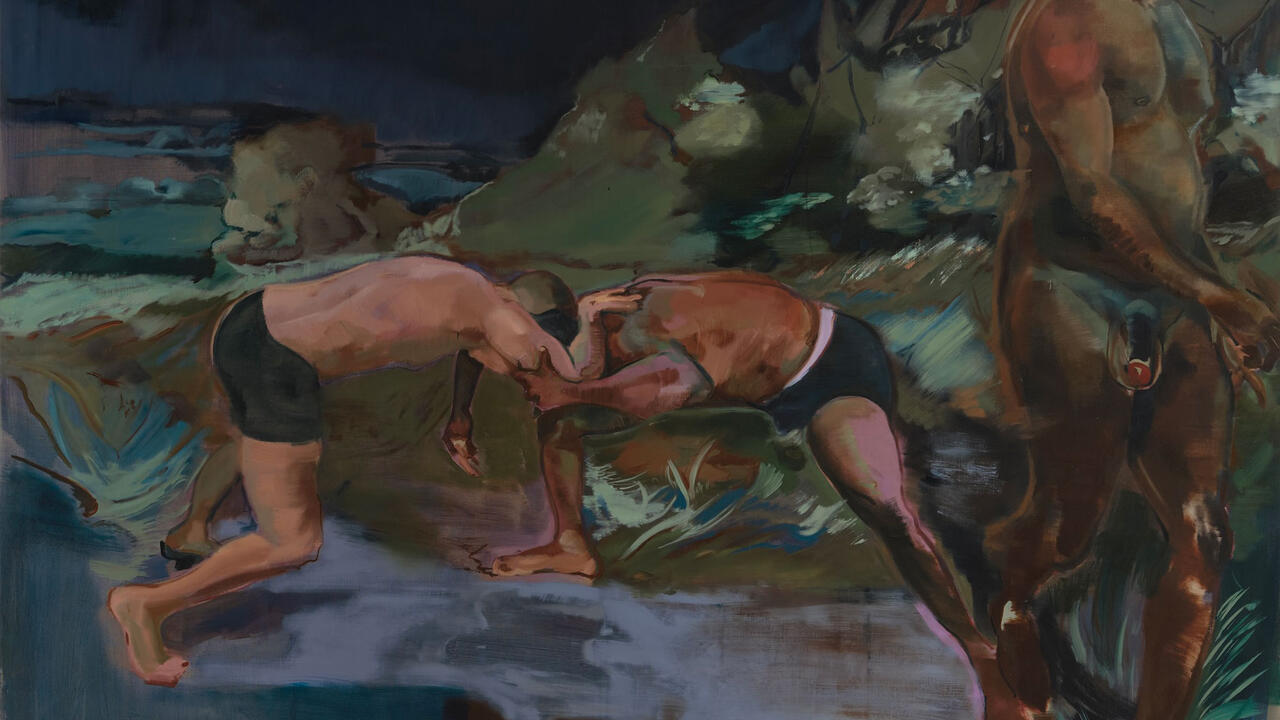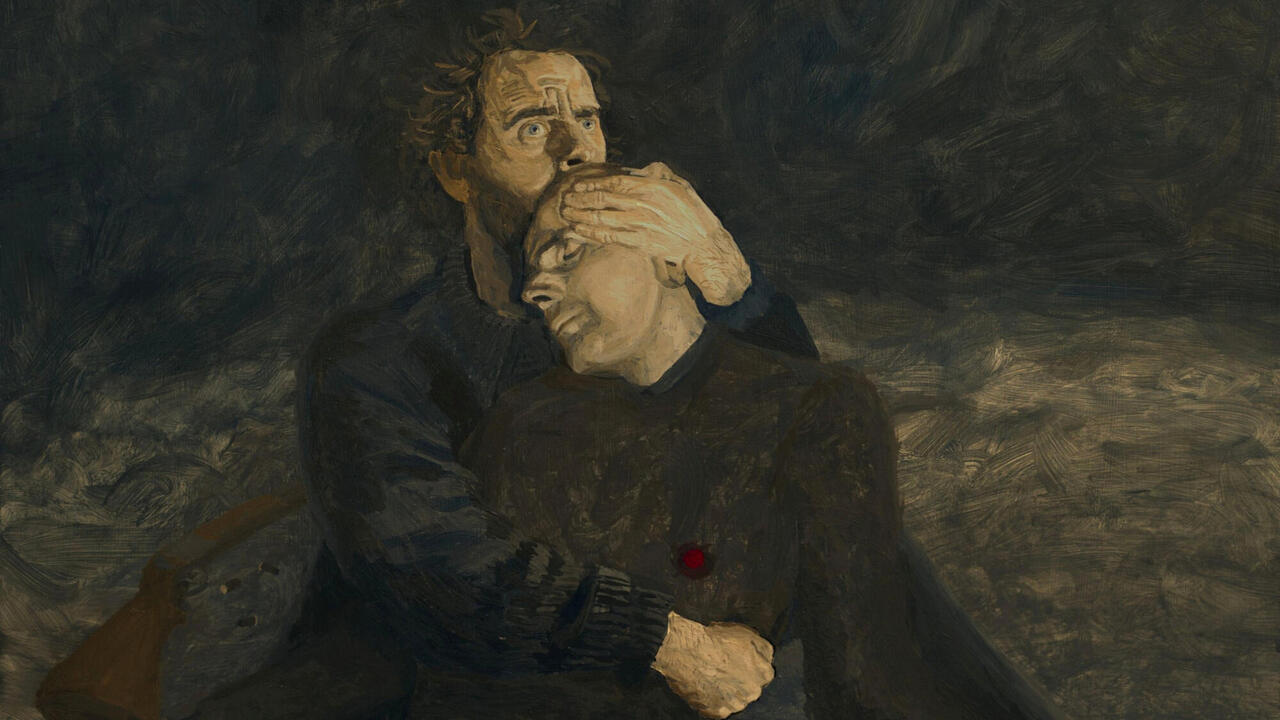From Charcoal to Lipstick, Drawing’s Potential for Experimentation and Rebellion
Bringing together more than 200 artworks, the Drawing Biennial 2019 hammers home why the medium is still so crucial to artists working today
Bringing together more than 200 artworks, the Drawing Biennial 2019 hammers home why the medium is still so crucial to artists working today

Drawing is a slippery art form. It is humble, immediate, mostly undemanding by way of space or logistics. But it is also expansive, liberating in its connotations of spontaneity and informality. It is this sense of the medium’s potentiality that underpins the Drawing Biennial 2019. Held by London’s Drawing Room – Europe’s only non-profit space dedicated to contemporary drawing – the biennial brings together more than 200 artworks, which will be auctioned in March to raise funds to support the institution’s programme and study library. Each participating artist is asked to submit an A4 work on paper, lending the show an egalitarian quality, with leading art-world names (Antony Gormley, Cornelia Parker) afforded the same space as emerging artists. Although the works are thematically and formally diverse, collectively they hammer home a salient point: drawing is still crucial to the practices of many artists working today.

Joy Gerrard’s submission, Protest Crowd (No Brexit, People’s Vote March, Parliament Square, London, 2018) (2019), depicts an anti-Brexit demonstration in inky blacks and washes of grey. Gerrard is known for archiving images concerning protest and urban space and then meticulously re-creating them. Although the work is figurative, the nature of the ink renders the mark-making abstracted and rhythmic. With individual participants no longer discernible, it is the crowd as an entity that takes precedence.
Other drawings delve into more private, interior worlds. Sandra Vásquez de la Horra works in the tradition of artists such as Louise Bourgeois, adopting an idiosyncratic mythology of figures, symbols and text. In Invocaciones (Invocations, 2018), a man sits in side-profile, his red boots matching his exposed lungs. He smokes a pipe, the emerging vapour giving way to faces with Cheshire cat grins. Alongside her submission, Vásquez de la Horra writes that the image is a memory of an old friend who passed away; drawing here is intimate, personal. The materiality of the work heightens this sentiment: as standard, the artist’s scale is small, her media rudimentary, her line industrious, scrubbed away and resituated. When a drawing is complete, Vásquez de la Horra soaks it in wax to seal it in a quasi-ritualistic gesture.

For many artists, drawing is a place where ideas are born and developed. Hardeep Pandhal’s portrait, British Sikh Soldier (Osama) (2019), comprises part of a series he has been working on since 2010, after learning about the contributions of colonial soldiers to both world wars. The drawing also offers us a glimpse into the artist’s ongoing investigation into the nuances of British-Indian identity, which manifests in forms as broad-ranging as moving-image, rap and textile collaborations with his mother. As Pandhal tells me: ‘Drawing gives access to a space of reflection and speculation. It’s the fulcrum of [my] practice as a whole.’ The ink line of the soldier’s profile is charged with kinetic energy: both residual – that of the artist’s hand moving across the page – and potential, as Pandhal will transfer the figure to his larger drawings and animations.
Nicolas Deshayes tells me that he uses drawing as ‘a palate cleanser between the production of different bodies of sculpture’. His submission, Swan (2018) – a tender watercolour of a barren, yellowed sink – feels far removed from his usual slick work. Deshayes’s sculptures are industrially produced, distant from the artist’s hand, whereas this drawing implicates a human touch, brushstrokes visible on the ever-so-slightly buckled paper.

Historically, drawing has often been relegated to the realm of preparatory work for more serious endeavours – paintings, sculptures, buildings, concepts. In Howard Dyke’s Fidel (2018), however, this notion is capsized. Taking one of his own paintings – Castro (2017), a large-scale depiction of the former Cuban President – as a point of departure, Dyke used a frottage technique to pick up patterns and shapes from within the paint surface. The result, an abstract drawing in graphite and oil stick, testifies to the capacity of the medium as an end in itself. Not the start, nor the side line, but the conclusion.
In The Pleasure in Drawing (2013), philosopher Jean-Luc Nancy writes that drawing ‘does not settle for “taking note”.’ This maxim is a thread that runs through the show, with many of the submissions testament to the medium’s faculty for experimentation. Athena Papadopoulos’s drawing, Oil Swarm (One Unit Is Greater than Three) (2018), is built up much like her sculptures, seemingly with any material she can get her hands on – charcoal, biro, rapeseed oil, lipstick. Her chosen surface is comprised of sheets torn from a telephone message pad: a small act of rebellion against the supplied standard cartridge paper. Daniel Silver rebels further still, abandoning paper altogether: his artwork, Landscape (2019), is an assembly of hand-stitched cashmere and wool cut-outs.

It is ultimately, though, drawing’s accessible nature that confirms its centrality to artistic practice. ‘Drawing can be done cheaply, which gives me a glorious freedom – I can make hundreds of drawings whenever I fancy,’ Penny Goring tells me. Her work Over and Over (2018) – a ballpoint pen drawing of an aggressively contorted woman above the words ‘WHAT DOESN’T KILL ME MAKES ME TRAUMATISED’ – is, she states, about the ‘violence of austerity’. As curator Stephanie Straine writes in an essay to accompany the exhibition, drawing’s ‘potential for economy of line and quickness of expression opens the door to caricature and social commentary’. Artists in the biennial repeatedly capitalize on this trait. For his submission, Michael Landy has made a drawing in bright yellow and blue, a circle of stars surrounding one word: Brexshit. Brexshit indeed.
Joy Gerrard, Protest Crowd (No Brexit, People’s Vote March, Parliament Square, London, 2018), 2019. Courtesy: Drawing Room, London





















